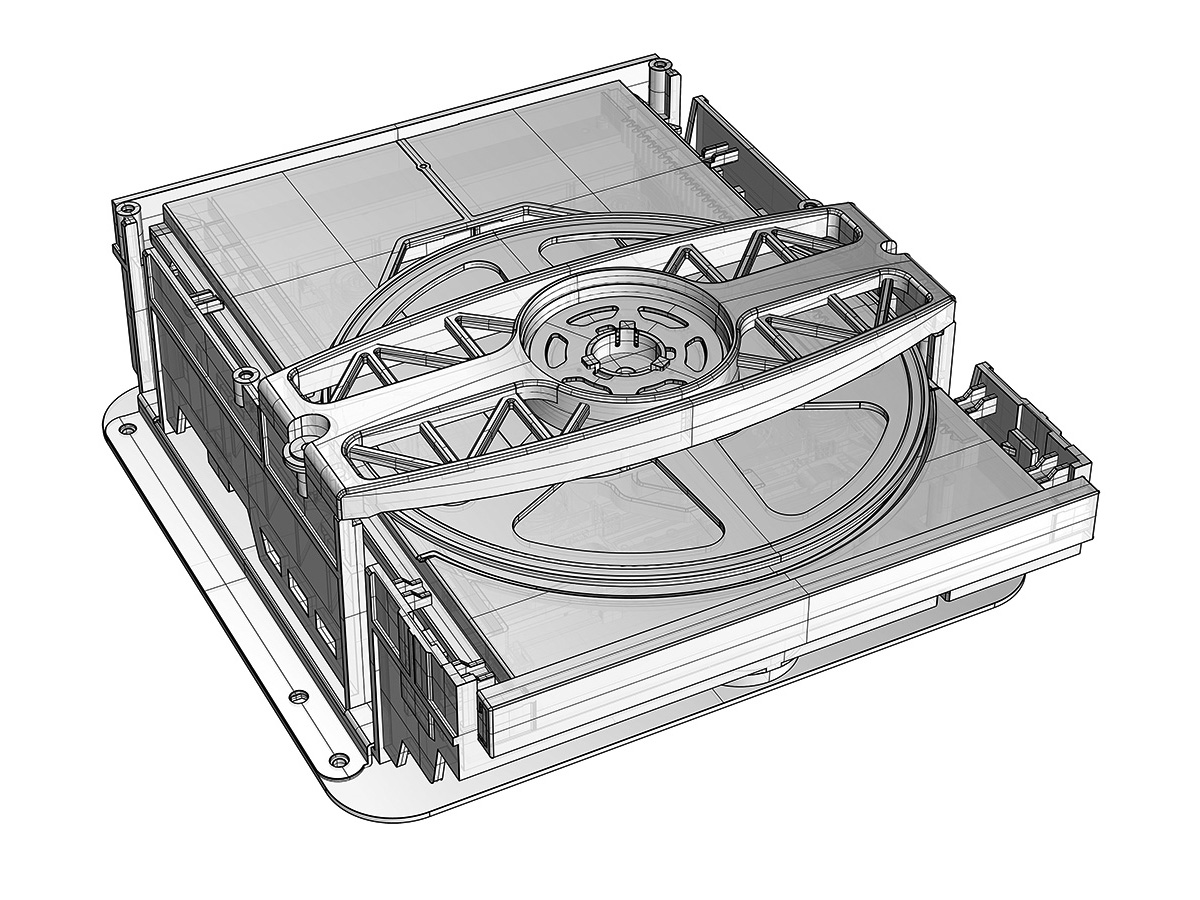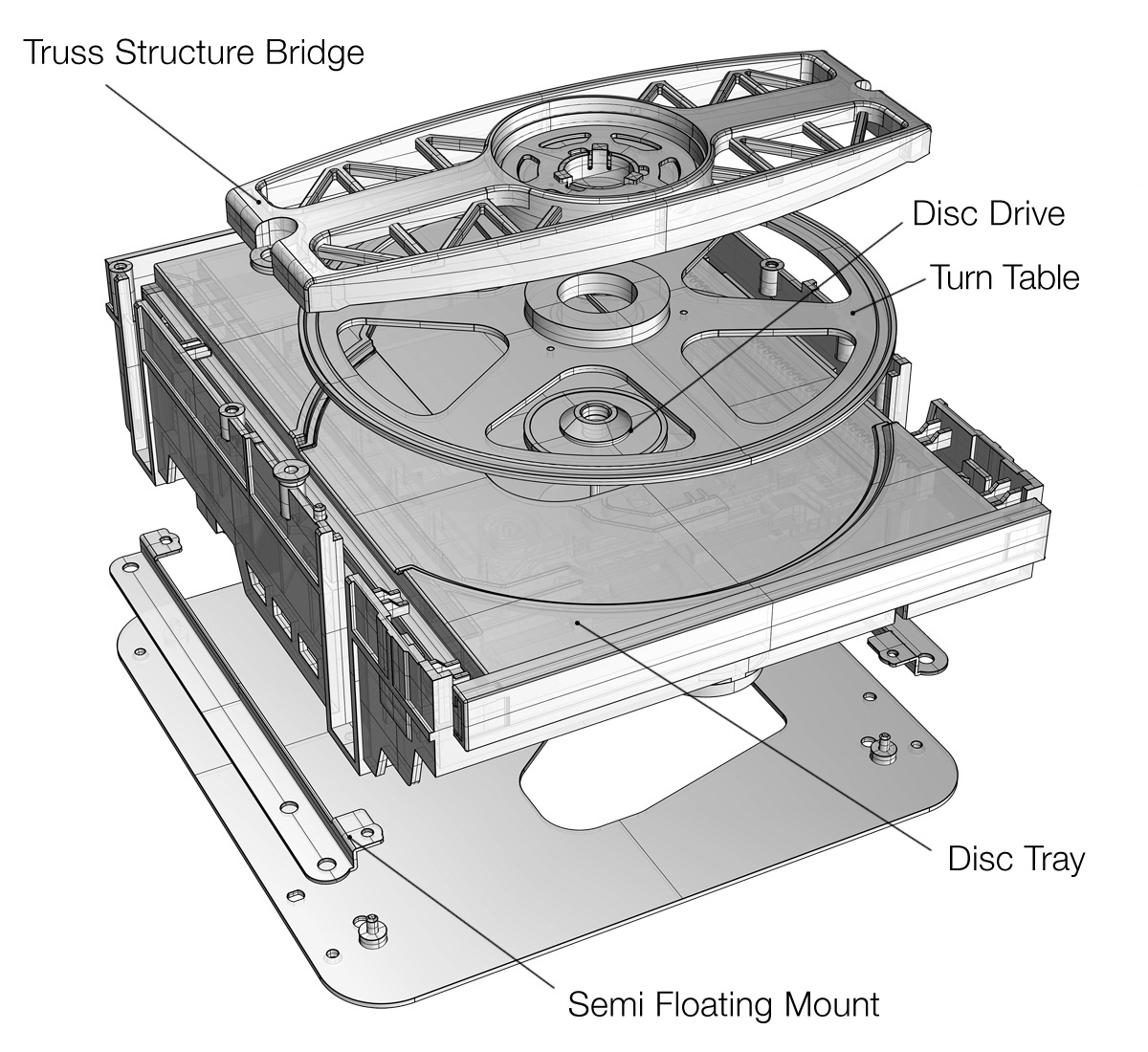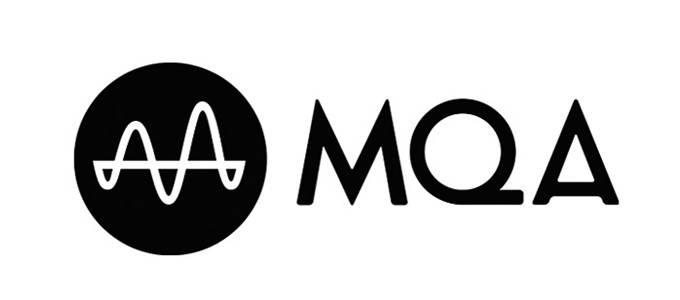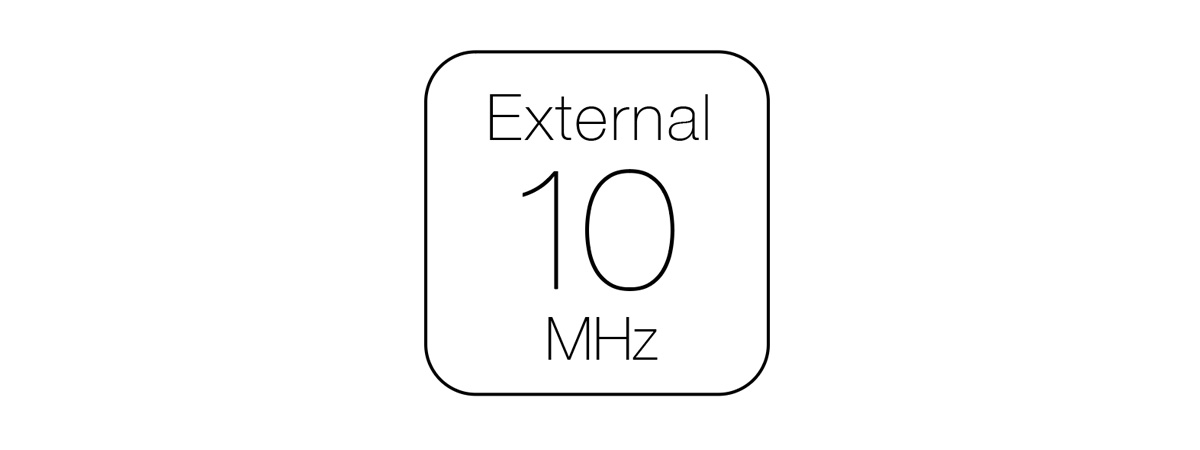CD Player Transport Teac VRDS-701T Negru
- Descriere
- Specificații
- Informații suplimentare
- Sfaturi practice
- Producător
- Recenzii (0)
Descriere
The VRDS-701T is a commemorative CD transport model that celebrates TEAC’s 70th anniversary. Utilizing our newly-developed VRDS mechanism, it can maximize the true capabilities of a system when used in combination with a DAC.
The VRDS-701T CD transport utilizes our newly-developed VRDS mechanism.
The VRDS is a TEAC-original CD drive mechanism that reduces rotation vibration and other unwanted vibration
by clamping the CD to an aluminum turntable with the same diameter in order to maximize inertial mass.
Used in combination with a UD-701N, which is part of the same series, playback is possible
using the discrete DAC in the UD-701N as well as with MQA full decoding.
Of course, you can also use it together with a DAC of your choosing, and build a system as you like.
The inclusion of a 10MHz clock input enables flexible integration
with systems that are synchronized using an external clock.
Starting with a drive we developed that has a long record of use in professional applications, we added VRDS technologies, which are part of our TEAC legacy.

This TEAC-original CD drive mechanism reduces rotation vibration of the disc itself as well as unwanted mechanism vibration by clamping the CD to an aluminum turntable with the same diameter and maximizing inertial mass in order to stabilize rotation. Servo current is reduced with the turntable by correcting disc warping and distortion and improving the relative optical axis precision of the pickup and disc pit side. This realizes reduced disc reading errors and outstanding audio quality.

For the bridge that supports the turntable, we carefully selected lightweight materials that are very rigid and do not transmit vibration. By naturally settling vibrations quickly, we have realized a wide, dynamic sound. The bridge, which has a torus structure made of resin, is only fixed on one side, and propagation of vibration from the CD mechanism to the opposite side through the bridge is suppressed, so the entire mechanism minimizes unwanted sympathetic vibrations.
The entire CD mechanism is mounted on the sub-chassis in a semi-floating state. By controlling the transmission of vibrations between the CD mechanism and the chassis, the impact of sympathetic vibrations is abated, and natural playback sound is realized throughout the frequency range. By isolating motor vibrations from the main chassis, sympathetic vibrations within the chassis are prevented. At the same time, the CD mechanism is also isolated from external vibrations. Reading precision is also increased by isolating the CD mechanism from external vibrations.
By eliminating the DAC function, the internal circuitry has been optimized for digital output. We have pursued higher audio quality by, for example, using larger components that did not fit in more limited space.

The VRDS-701T has a built-in MQA core decoder and can digitally output MQA CDs at 88.2 kHz . Moreover, when used together with a DAC that has an MQA rendering function, playback using MQA full decoding is also possible.


The 10MHz clock input allows synchronization with an external clock. In addition to improving audio quality during playback with the VRDS-701T, this also enables synchronization of the entire system with a clock generator.


Independent high-capacity toroidal core transformers are dedicated to the digital control section and the CD mechanism. These 2 high-capacity toroidal core transformers enable current to be supplied with greater stability.
Power transformers, which tend to generate vibration, are mounted on a floating structure, separating and isolating them from the bottom panel. The side fins for heat dissipation have been tailored so that each one has a different length in order to eliminate sympathetic vibrations.
The circuit board attachment screws have been kept to a minimum. Furthermore, steel pinpoint feet that use an original TEAC design with a new structure to provide a suitable amount of play in the connection between them and the bottom panel, are employed to thoroughly control vibrations that could affect audio quality.
RS-232C is present for integration with popular control systems, and trigger input and output connectors enable power coordination with other devices.

Features at a glance
- CD transport for use in combination with an external DAC that has a digital input
- A newly-developed VRDS mechanism is used for the CD drive
- MQA core decoding function
- S/PDIF (optical/coaxial) digital outputs
- 10MHz external clock input
- Dedicated toroidal core transformers for the digital output and CD drive circuits
CD section
Supported media Audio CD, CD (CD-R/CD-RW) * 8cm CDs not supported.
Digital audio outputs
COAXIAL
Connector RCA × 1
Output level 0.5Vp-p
Output impedance 75Ω
OPTICAL
Connector TOS (JEITA RC5720C) × 1
Clock sync input
Connector BNC × 1
Input frequency 10MHz
Input impedance 50Ω
Input level
Rectangle wave Equivalent to TTL level
Sine wave 0.5 to 1.0Vrms
External control
Trigger in (12V TRIGGER IN)
Connector 3.5mm Mono mini jack × 1
Input level 12V, 1mA
Trigger out (12V TRIGGER THRU)
Connector 3.5mm Mono mini jack × 1
Output level 12V
Maximum curret supply 100mA
Power AC120V, 60Hz
AC220-240V, 50/60Hz
Power consumption 10W
Standby power 0.4W
Overall dimensions 444 (W) × 111 (H) × 333 (D) mm (including protrusions)
Weight 10.1kg
Operating temperature +5℃ to +35℃
Operating humidity 5% to 85% (no condensation)
Storage Temperature range −20℃ to +55℃
Included accessories AC cord, Remote c
Informații suplimentare
| Producător | |
|---|---|
| Disponibilitate | În Stoc Furnizor * Verificati disponibilitatea produsului! |
| Unitate Pret | Bucata |
Explicatii in ceea ce priveste rodajul echipamentelor, cat si al cablurilor, asezarea optima a echipamentelor in camera de auditie, importanta acusticii camerei si nu in ultimul rand sistemul de alimentare a intregului echipament:
PENTRU BOXE:
- Pentru performante optime este necesara pozitionarea boxelor la o distanta de minim 30-40cm de peretele din spate pentru boxele cu bass-reflex in spate, pentru cele cu bass-reflex in fata, recomandam pozitionarea la o distanta de 10-20cm fata de peretele din spate, dar totodata la o distanta de cel putin 50cm fata de peretii laterali. Tineti cont de faptul ca orice piesa de mobilier din incapere, joaca rol de absorbtie fonica, dar si de difuzie fonica daca acestea din urma sunt din materiale ceramica sau oglinzi, geamuri sau alt material reflectorizant. In acest sens, gasiti pe blogul nostru, multiple articole care va pot ajuta
- Boxele vor ajunge sa functioneze in parametrii recomandati de producator, dupa minim 50 de ore (ideal 100 ore) de functionare la volum mediu. In aceasta perioada de timp, de “rodaj a boxelor”, sunetul va fi la inceput mai artificial, bass-ul nu va fi inca controlat, inaltele rigide iar vocile usor retinute, pe masura ce boxele vor functiona, veti remarca cum bas-ul devine mai controlat, mai prezent si mai voluminos, vocile si sunetele medii devin naturale si mai echilibrate, iar inaltele devin rafinate si detaliate. Exista boxe care necesita un „rodaj” mai amplu de minim 300 de ore mai ales in cazul celor care au difuzoare de kevlar, carbon sau alte materiale de acest tip. Boxele care se „rodeaza” cel mai repede sunt cele care au difuzoare de celuloza.
Imbunatatirea sunetului unui sistem audio stereo (Partea I)
Imbunatatirea sunetului unui sistem audio stereo – (Partea II)
PENTRU AMPLIFICATOARE, DAC-URI, PREAMPLIFICATOARE, RECEIVER STEREO & HOME CINEMA, SURSE DIGITALE AUDIO-VIDEO:
- Pentru performante optime este necesar „rodarea” echipamentului, In functie de complexitatea componentelor din aparatul dumneavoastra acesta poate dura intre 30-200 ore.
- Rodajul se face la volum minim, fiind astfel suficient faptul ca acesta este alimentat corect conform manualului de utilizare la 220-230 Volti si trece semnal audio sau video dupa caz prin el.
- Echipamentul supus „rodajului” va ajunge sa functioneze in parametrii recomandati de producator, dupa perioada mai sus mentionata. In aceasta perioada de timp, de “rodaj”, sunetul va fi la inceput ceva mai artificial, bass-ul nu va fi inca controlat, inaltele rigide iar vocile usor retinute, pe masura ce echipamentul va functiona, veti remarca cum bas-ul devine mai controlat, mai prezent si mai voluminos, vocile si sunetele medii devin naturale si mai echilibrate, iar inaltele devin rafinate si detaliate.
- In ceea ce priveste echipamentul video precum videoproiector, TV, media player, blueray player, necesita un "rodaj" de cel putin 50 de ore. Lipsa acestuia nu va poate oferi maxim de performanta. "Rodajul" se efectueaza prin simpla utilizare a acestuia, intr-un mod conform specificatiilor mentionate de producator.
PENTRU CABLURI:
- Pentru performante optime este necesara „rodarea” cablurilor, In functie de complexitatea conductorului folosit, cat si geometriei acestuia, „rodajul” poate dura intre 30-100 ore.
- Rodajul se face la volum minim, fiind astfel suficient faptul ca va trece semnal audio sau video dupa caz prin el.
- Cablul supus „rodajului” va ajunge sa functioneze in parametrii recomandati de producator, dupa perioada mai sus mentionata. In aceasta perioada de timp, de “rodaj”, sunetul va fi la inceput ceva mai artificial, pe masura ce cablul va functiona, veti remarca cum bas-ul devine mai controlat, mai prezent si mai voluminos, vocile si sunetele medii devin naturale si mai echilibrate, iar inaltele devin rafinate si detaliate.
Articole indrumatoare:
Tratamentul Acustic si Izolarea Fonica
Pentru un sistem echilibrat, trebuie tinut cont pe langa asezarea corecta a boxelor in incapere, al echipamentelor, sistemul de alimentare al acestora, tinand cont de instalatia electrica a locatiei.
Pentru detalii privind aceste aspecte de rodaj si nu numai, va rugam sa ne consultati!






















Recenzii
Nu există recenzii până acum.